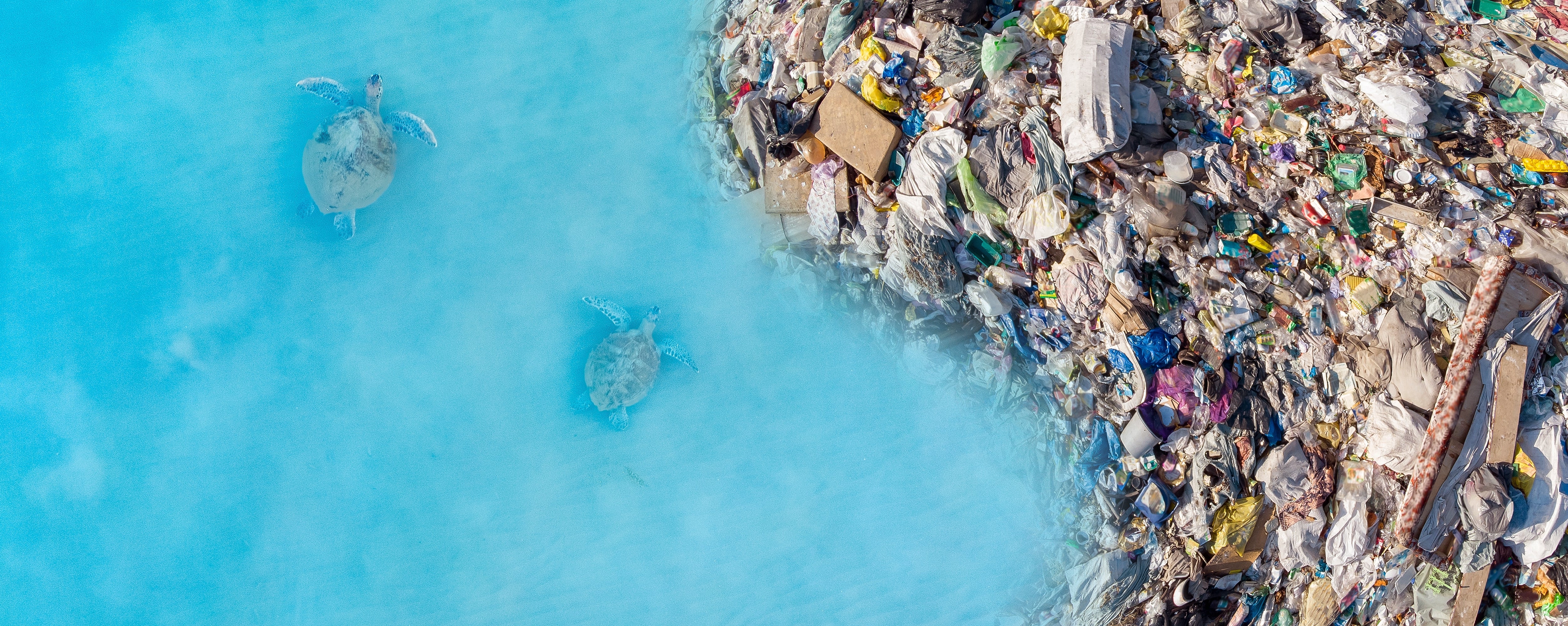5 MIN READ
2-5-2024
An Entire
Island Made
of Plastic
In The Middle Of The Pacific!?
Mikaela Walsh, 4ocean Research Analyst
Were you aware that in the middle of the Pacific Ocean, there is a mass of accumulated plastic debris that is referred to as ‘The Great Pacific Garbage Patch’?
This accumulation is not a small area of floating plastic debris but rather a massive collection of garbage scattered across a region in the Pacific Ocean from decades ago that is continuing to grow. It is essentially floating ‘islands’ in the middle of the Pacific Ocean formed of plastic waste.
The Great Pacific Garbage Patch is not, in actuality, one giant floating island but rather tons and tons of floating debris that is pushed together in one specific area by the currents of the Pacific Ocean. The patch is made up of various types of plastic and other debris.

Plastic debris enters our oceans in numerous ways, including runoff from land, littering, not disposing of waste properly, construction, etc. Most of the debris enters the ocean by coastline, but some enter the ocean through vessels. Fishing gear gets illegally dumped from boats, which is one of the biggest problems because this can cause animals to get stuck in old nets and cause the plastic to get wrapped in fishing gear, holding it together. The plastics in this region have different densities, sizes, and materials.
Furthermore, this means some plastic is buoyant and floats at the ocean's surface while others are submerged below the surface. It is estimated to be twice the size of Texas, having accumulated over the years due to the flow of the Pacific Ocean currents. The ocean is always moving due to the earth's wind and the Coriolis Effect due to the rotation of the earth. The ocean currents form gyres in the different oceans, which are circular motions of the ocean current that push matter and debris toward the middle.

The Great Pacific Garbage Patch is an entrapment of plastic debris and fishing gear that has continued to be shaped by the currents.
Now, this region has turned it into an extremely massive area off the coast of California between Hawaii. Using flight and vessel surveys, it is estimated that at least 79,000 tons of plastic debris make up this in a 1.6 million km^2 area. Around half of this debris is fishing gear that was illegally dumped off boats and plastic debris that is wrapping and tangling up in each other. A major issue with plastic debris of any size is that over time from exposure to UV from the sun and crushing waves, they will eventually break down into microplastics. The latest estimates indicate the presence of 1.8 trillion pieces of plastic in this region. As a result, this causes detrimental effects on animals that must migrate and survive in the vast expanse of the open Pacific Ocean.
The predicament with the Great Pacific Garbage Patch is it prevents animals from reaching the surface of the water, as it traps animals inside. It also poses a serious threat to the animal populations in this region for numerous reasons. This includes plastic ingestion, entanglement in fishing nets, and other injuries that this patch causes. Furthermore, entanglement is very harmful to marine species and can cause many catastrophic effects. Entanglement happens due to old fishing materials that have gotten lost or discarded. The patch poses a major risk to marine life in the Pacific Ocean. The Great Pacific Garbage Patch has problematic effects on the Pacific Ocean, but there's another issue.

These floating patches of plastic debris occur in all the oceans, but the Great Pacific Garbage Patch is the most abundant and the biggest. It is fairly likely that the fate of plastic debris that is entering our oceans will either get eaten by fish, break down into microplastics, or join one of the patches that are across the oceans. Despite being a very difficult task, breaking this patch up would enormously benefit our oceans and marine life. We can stop the growth of these patches by eliminating unnecessary single-use plastic such as water bottles and plastic bags, partaking in ocean clean-ups, and ensuring that the fishing equipment is not dumped into the ocean after use.


